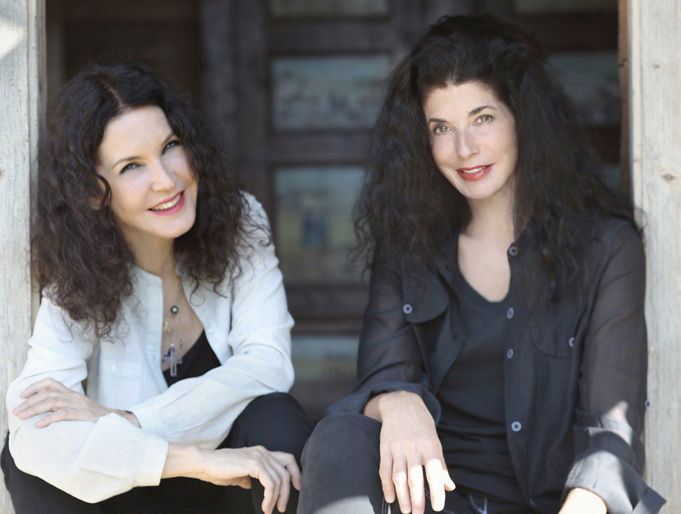 August 1, 2013. Koerner Hall, Toronto. Photo by Umberto Nicoletti.
August 1, 2013. Koerner Hall, Toronto. Photo by Umberto Nicoletti.
In the minimalist dream house you listen to the sound of raindrops on the roof, the patter of small animals in dry leaves at night, the chorus of frogs in the swamp, the ‘rumble of the subway trains, the rattle of the taxis,’ the drums of jungle telegraph, the roar of the falls at Niagara, the drone of bagpipes and sitars, radar blips, the voices of the damned in psych wards, feedback from electic guitars, the rush of heart’s blood through a stethoscope, and so on.
And believe it or not, 3 hours of this was music to the ears of most of the audience that filled Koerner Hall to hear the piano duo Labèque sisters and their crew of composer-musicians play music from Erik Satie through John Cage and Philip Glass to Radiohead, Sonic Youth and Suicide.
The show was well-crafted in the shape of a bell-curve. It began quietly, with Katia Labèque soloing on one Steinway grand through three meditative ‘rain-drops-on-the-roof’ pieces from Satie (1891). Then sister Marielle sat in at the opposite Steinway and they raised the ante with beautiful short pieces by eminent moderns John Cage (1945) and Arvo Part(1984), and William Duckworth’s Time Curve Preludes (1977-78) that rode the ripple of an Appalachian banjo hoedown tune like “Cripple Creek.” The sisters ended their piano recital section with a version of Philip Glass’ 4 Movements, that was so dynamic it could have drawn the phantom of the opera out of hiding.
The sonic curved climbed and began to rock radically at intermission with a tape of Terry Riley’s ‘plunderphonics’ Bird of Paradise (1965), a cut-up and looped mix of R&B jams, classical and pop riffs, noise-effects and whatever, all playing at different speeds. This part of the show, where the curve climbs to nearly unbearable heights of pleasurable intensity, is about how Minimalism entered the pop/rock/punk mainstream with tunes from Brian Eno, Radiohead, Sonic Youth and Suicide. Here, the band took over—David Chalmin, guitar and vocals, Nicola Tescari, keyboards and electronics, Alexander Maillard, bass, and the unstoppable Raphaël Séguiner on drums and electronics, all mixing their own musics with the established Minimalist classics.
They turned Koerner Hall into a rock concert, starting with Terry Riley’s 1964 seminal hit In C. With a Labèque sister at the piano playing the note C in repeated eighth-notes as metronome or pulse, the band played an assortment of Riley’s 53 musical phrases, some as simple as “London Bridges” over and over as many times as they liked for as long as they liked until the texture moved from a voice crying in the wilderness to the scream of a heavy-metal show (kept sweet by the awesome acoustics of Koerner Hall). The energy level backed off a bit into the mellow with Brian Eno’s “In Dark Trees”(1975) and Radio Head’s “Pyramid” sung softly and moody-blue by David Chalmin. Then bassist Raphaël Séguiner took off with his Free to X (2011) in which drums and the whistling drone of electronics whined like the surges of body juice and impeded air-supply of a diptheria victim, but in a good way.
I thought Glenn Bracca’s Lesson No.1 (1978) rose to a crescendo of excitement that was the evening’s peak, but the band’s version of “Free City Rhymes” by Sonic Youth with dissonances like Tuli Kupferberg’s Fugs rocked the room to a whole new level of crazy where it remained through the drum-machines, nervy vocals and pulsing synth of “Ghost Rider,” by synthpunk band Suicide. Both Labèque sisters sat in for guitarist David Chalmer’s Gameland (2011) that started with pianos and silent electronic explosions before taking a totally weird turn into heart attack territory and then dissolving in a rainbow display of overtones. It is safe to say the excitement in a classical concert hall doesn’t get much higher.
After the second intermission, the sonic energy levels worked their way back to music that showed traces of Ravel and Debussy with British composer Howard Skempton’s Images (1989), and further back to Bach with One plus One (1967) by Philip Glass. Of course the improbables of Minimalism continued with titles like Postal Piece No. 10 Having Never Written a Note for Percussion (1971) by James Tenney, and Henry Flynt’s Work such that no one know what’s going on (1961). The show ended quietly, enigmatically, minimally appropriate, with 15 minutes of sustained drone: The tortoise, his dreams and journeys, by La Monte Young (b.1935), generally thought of as the first minimalist composer.
Let me sum up my experience of The Minimalist Dream House Project this way. As I was leaving the hall, feeling tired but happy and grateful, a girl at the lobby-bar was scooping ice-cubes out of a receptacle into a bag. It sounded pretty good to me.
